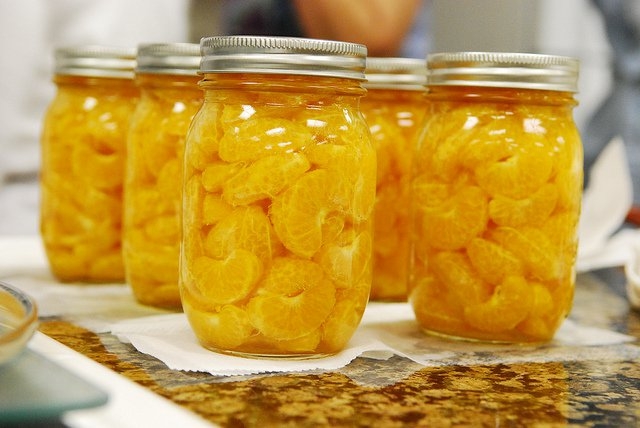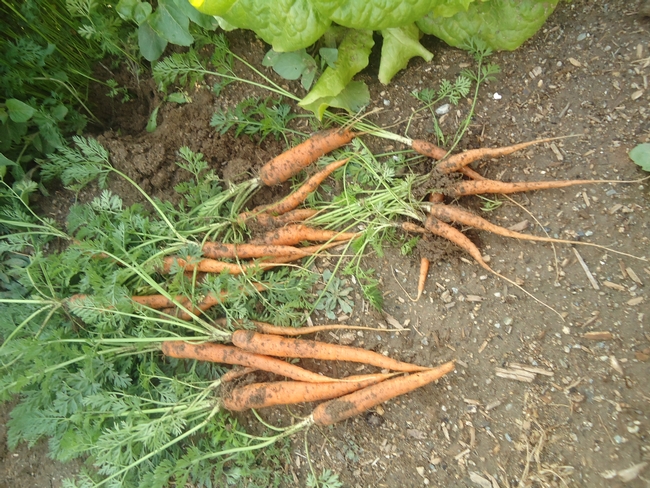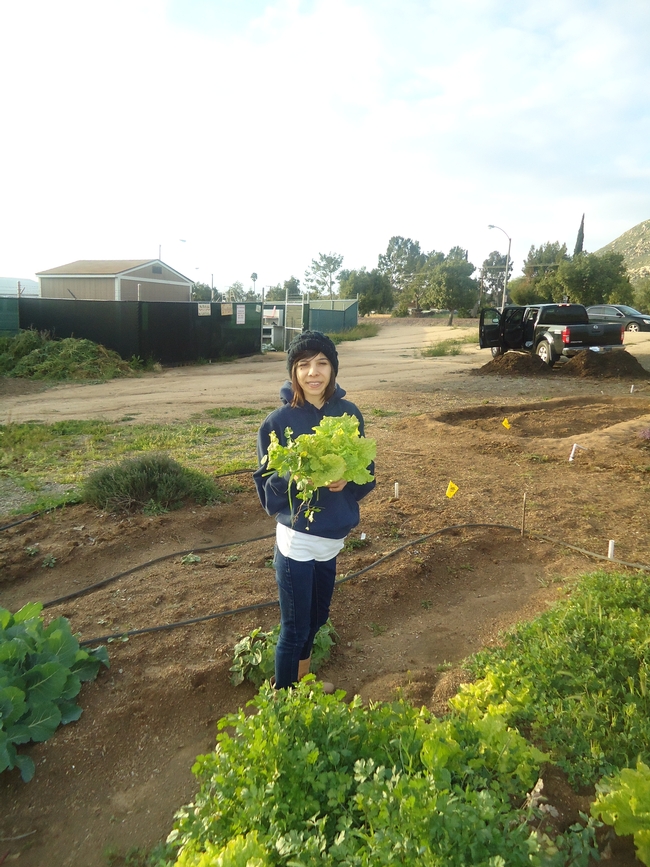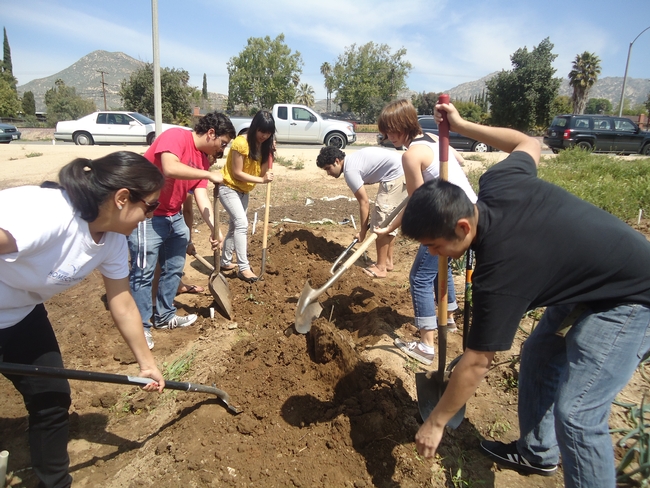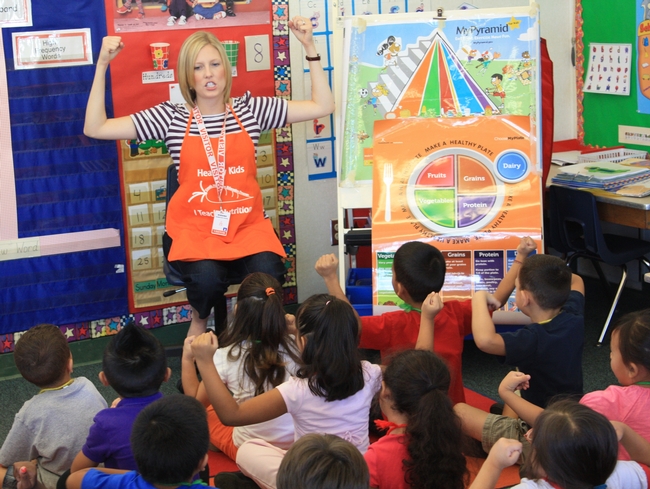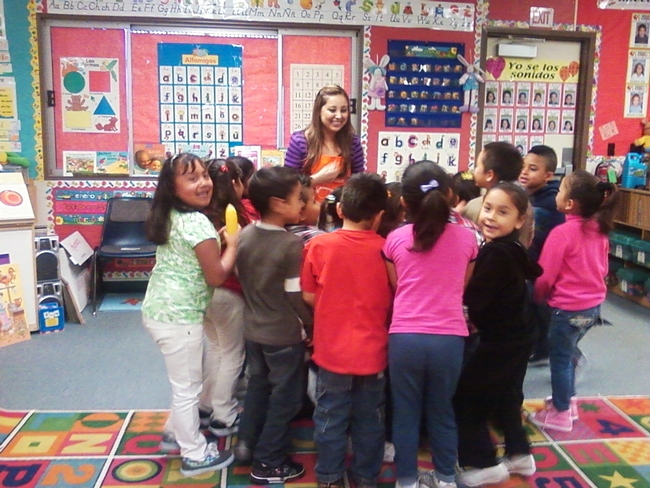UC Food Blog
Home preserved foods: Nutrition friend or foe?
This time of year, many food preservation enthusiasts are hard at work in their kitchens canning, freezing, drying and fermenting. They are scouring their recipe books (USDA approved, of course!) for interesting and delicious ways to take fruits and vegetables at the peak of their freshness and preserve them so they may be enjoyed year-round. For the home food preserver, this hard work will pay off for months to come, and lucky family members and friends will delight in the delicious gifts that are sure to come their way.
When we think of preserved food, however, we often conjure up thoughts of sticky, sweet jams and jellies and salty pickles and sauerkraut. The treats from the kitchen of a home food preserver are tasty, but it's not exactly health food, right? Well, you might be surprised to learn that this is not necessarily the case.
The many benefits of fermentation
Typical fermented foods include yogurt, soy sauce, miso, tempeh, buttermilk, pickles and sauerkraut. Fermented foods have been used for centuries in almost every culture for long- term food storage, to flavor foods and in times of food shortages. These foods offer a wide variety of health benefits due to the process of fermentation, which actually increases nutrients such as folic acid, vitamin B12, nicotinic acid, riboflavin, and thiamine. Fermented foods also have "friendly bacteria" or probiotics, that are similar to the beneficial microorganisms found in our gut. More research is needed in this area, but some studies show promising results in treating bowel diseases and stimulating the immune system with probiotics. Additionally, the process of fermentation partially brakes down lactose, making it easier for lactose-intolerant people to consume milk-based products such as yogurt.
Cancer-fighting phytochemicals
When food is cooked, dried, frozen and reheated, there is always a loss of nutrients.
Vitamins A, C and B are often degraded through the cooking process, however, some cooked vegetables actually supply more cancer-fighting antioxidants than their raw forms.
For instance, researchers at Cornell University found that heat from cooking actually increases lycopene content and overall antioxidant activity in tomatoes. Lycopene is a naturally occurring chemical (or "phytochemical") found in tomatoes that decreases risk of cancer and heart disease. So what does this mean, exactly? Is it better to eat our veggies raw or cooked? Well, raw tomatoes are undoubtedly a great source of Vitamin C, but it's also a good idea to eat some canned or cooked tomatoes to benefit from the high levels of lycopene and antioxidant activity. This is true for many other vegetables in our diet, as well.
What about all that sugar and salt?
Sure, jams and jellies are often made with a good amount of sugar, and we need to use salt to ferment pickles and sauerkraut, but there are ways to preserve food without high amounts of salt or sugar.
We can't remove the sodium from fermented pickles or sauerkraut (unless we rinse them before eating), but sodium can be removed from fresh-pack pickles. You can find delicious, low-sodium recipes on the National Center for Home Food Preservation website (http://www.uga.edu/nchfp/how/diet_pick.html). One concern we may have about canned vegetables (whether homemade or store bought) is that they are often high in sodium. Well, the salt in canned food is only used to season the food, it is not necessary for safety. So, if you desire to keep sodium levels low, you can omit the salt when canning and use salt substitutes when you're ready to eat the food. Cooking with garlic and fresh or dried herbs is also great way to add flavor to a low-sodium canned food.
There are a variety of fruit spreads that can be made lower in sugar and calories than regular jams and jellies. There are also two types of modified pectin that can be used that require less sugar. Recipes for low-sugar fruit spreads can be found on the National Center for Home Food Preservation website (http://www.uga.edu/nchfp/how/can7_jam_jelly.html).
You can also use gelatin as a thickening agent in low-sugar recipes, but these fruit spreads must be refrigerated and used within a month or so, rather than canned for long-term storage.
Fruits can also be canned more healthfully in water or 100% fruit juices, rather than sugary syrups. These fruits must be ripe but firm and prepared as a hot pack. Refer to the USDA Complete Guide to Home Canning for more information. Splenda is the only sugar substitute that can be added to covering liquids before canning fruits. Other sugar substitutes can be added when serving.
Enjoy the fruits of your labor
The next time you enjoy a jar of home canned vegetables or fermented pickles, think cancer- fighting antioxidants and friendly bacteria for your gut. Not only are you consuming produce that was preserved at the peak of its freshness, but you are certainly doing your body some good!
Alternatives to fumigation and improving fumigant efficacy
Synthetic soil fumigants such as chloropicrin and 1,3-D are used by some commercial growers to control soilborne pathogens, weeds and nematodes prior to planting strawberries, onions, tomatoes, eggplant, peppers and spinach.
These fumigants and all other biocidal products with the potential to harm the environment and human health are highly regulated by the federal Environmental Protection Agency, the state Department of Pesticide Regulation, and county agricultural commissioner's offices.
UC Cooperative Extension farm advisor Oleg Daugovish and his collaborators work hard to find effective, environmentally safe and economically viable ways to improve efficacy of fumigants and to investigate alternatives to soil fumigation. The Ventura County Cooperative Extension website has archived audio and visual presentations, which include the following topics:
- Assessment of permeability of commercial tarps under a variety of cultural practices and in various soil and environmental conditions is expected to lead to better understanding of maximizing fumigant effectiveness while reducing emissions.
- Growing in substrate (soil-less culture) allows growers to produce crops with minimal plant disease and weeds without using fumigants.
- Heating soil using steam is a successful way to disinfest it. However, the process to generate steam in a field can be slow and very expensive. Researchers are working to find ways to improve speed while reducing cost.
- Most organisms, including plant pathogens, cannot survive without oxygen. Researchers are investigating an organic method to create anaerobic (oxygen-free) conditions to treat soil before planting.
- Planting mustard as a cover crop can provide many positive benefits, one of which is allelochemical compounds. These compounds found in mustard are similar to those found in fumigants. Current research shows it is possible to use this green biomass to prepare fields for production.
To read more about Daugovish's research, visit http://ceventura.ucdavis.edu/Com_Ag/comveg.
A community garden takes root
Growing your own food. Raising awareness of food and environmental injustice. And creating a green community. These are the goals of the UC Riverside community garden initiative called Cultivate R-Space. At the community garden – a student-run “living experiment” that partners with UCR Sustainability – students grow and harvest their own food such as tomatoes, squash, potatoes and lettuce. Those who want just the experience of working in the garden grow flowers.
Located on campus, the nearly quarter-acre community garden has 20 plots to offer. Tools, water and seeds are provided at no charge to users. UCR Dining Services supplies the compost.
“It’s not as easy to work in the garden as it sounds,” cautions Cynthia De Leon, a junior who got involved in managing and using the garden last year. “It requires energy and a whole lot of passion. If anything, the garden teaches you how hard it is to grow food and exposes you to issues surrounding food and agriculture. Working in the community garden takes commitment, time and effort. To make sure interested students are fully dedicated, we ask that they first volunteer about two hours a week. If after a few weeks they continue to show an interest, we assign them a plot.”
A plan being worked out now by Cultivate R-Space is to allow faculty and staff to use the community garden for a small membership fee. The fees will kick in when the garden moves, in the very near future, to a location close to campus, occupying about an acre of land. Plans are also under way to get colleges on campus – the College of Natural and Agricultural Sciences, the College of Humanities and Social Sciences, and the Bourns College of Engineering – involved to promote research and hands-on learning about various social issues around agriculture and the modern food system. Serving as a learning platform, the community garden already is being used for soil science; the Science, Technology, Engineering and Mathematics (STEM) program; and Undergraduate Research in the Community.
“Our goal is not to feed everyone with this garden, and we understand we cannot grow food for all,” says junior Elizabeth Tizcareno, who also got involved with the garden last year. “This space is a model for tangible solutions that other communities in Riverside and elsewhere can adopt. The garden is an integral tool for researching how to develop sustainable neighborhoods. It is about developing a model that can be recreated elsewhere in order to sustain ourselves, our families, and live healthier and more equitable lives.”
The community garden has helped launch an Urban Garden Seminar at UCR that De Leon and Tizcareno facilitate. Held in the spring quarter, the weekly seminar includes a discussion of a food-related topic, guest speakers and field trips.
“The seminar has opened up an invaluable learning space – with hands-on experience – for students to learn about the garden and agriculture, as well as food injustice, such as the very high cost of some foods, occurring in Riverside and elsewhere,” Tizcareno says. “Food connects people and facilitates community formation. The goal of the seminar is that the students, even after they graduate, will create gardens in their communities for growing food.”
Both De Leon and Tizcareno plan to attend freshman orientation each year to spread the word about Cultivate R-Space and how it works with community-based organizations such as Growcology, a nonprofit in Riverside that creates sustainable programs, and Riverside’s Parks and Recreation Department. They hope to recruit many new users of the UCR Community Garden.
They plan, too, to take with them a sustainability award that Cultivate R-Space received in July 2011 from the California Higher Education Sustainability Conference: the Best Practice Award for Campus-Community Partnerships.
More information about Cultivate R-Space can be obtained by emailing sustain@ucr.edu or ucrurbangardenseminar@gmail.com.
UC-CalFresh supports school district menu changes through Nutrition Education
If you’ve ever asked a kindergarten student to flex their muscles, you know the smiles and giggles that follow. Their eyes grow wide when they learn about protein foods that help to keep their muscles strong. The UC-CalFresh Nutrition Education Program has the privilege of working with low-income students in Fresno County to combat childhood obesity through nutrition education.
Let’s look at a snap-shot of the health of Fresno County children. According to the CDC, 17.5 percent of children in Fresno County ages 2 to 5 years old are over the 95th percentile for their age. What does this mean? Over 21,000 young children are considered overweight. According to the California Department of Education, when compared with the statewide average* there is a greater percentage of 5th (36 percent), 7th (36 percent), and 9th (34 percent) grade students in Fresno County with an unhealthy body composition.
The numbers are jaw-dropping. What’s being done to combat these bleak statistics?
The Healthy, Hunger-Free Kids Act of 2010 has opened the door for improved menu changes to school breakfasts and lunches with increased funding for meals meeting updated nutritional standards. Examples of some of the new standards include: fat-free and low-fat milk, increased whole grains, a greater variety of colorful vegetables and offering juice that is 100 percent fruit juice.
The UC-CalFresh Nutrition Education Program works in close partnership with local school districts, food service directors, and over 900 Fresno County educators. In support of local school districts’ efforts to improve the nutritional value of the meals served, UC-CalFresh has come along side teachers to provide lessons, nutrition education materials, and healthy food demonstrations monthly. With a family-centered approach in mind, we further extend our reach through parent nutrition education classes and workshops.
At the University of California Cooperative Extension, our collaborative efforts are helping build and maintain healthy families and communities.
* Statewide averages in 5th, 7th and 9th are 32percent, 31 percent and 29percent, respectively.
Urban agriculture: An old model made new
Yesterday, I moderated a panel on urban agriculture at the annual meeting of the California Planning Association, which was held in Santa Barbara. The room was packed: urban agriculture is a hot topic these days. Micro-farms, backyard chickens, bee keeping, raw food markets all present challenges – and opportunities - for planners and communities. In our discussions yesterday, the idea of “scale” and definition came up frequently. The consensus of the panel? Within urban areas, urban agriculture should encompass everything from backyard gardens to commercial agricultural operations.
In practice, urban agriculture has been a persistent and organized activity in urban areas for well over a century. And one could argue that places like The Common in Boston make “urban agriculture” an even older model. Farming on the urban fringe - or even in the urban core, at some scale - has long been a feature of American life. Farmers markets are not a new feature of American life; they represent one of the oldest models of food distribution … from farmer direct to consumer.
The Panic of 1893, an economic downturn that brought distress to both urban and rural populations, was particularly difficult on Americans; there were few social safety nets for the poor and destitute. (Programs like Social Security and the Supplemental Nutrition Assistance Program – food stamps – came much, much later). The Panic of 1893 created a dangerous social climate in America, particularly in urban areas teeming with unemployed factory workers. The crisis brought to the fore a model of relief gardening that quickly took hold across the United States.
The “Potato Patch Farms” model, also called the “Detroit Experiment,” emerged under the leadership of Detroit’s mayor, Hazen Pingree. Pingree’s model connected hundreds of acres of vacant land in Detroit with unemployed workers and their families, who were provided with the materials, tools and education to garden the unused land. This was done in a systematic fashion. Pingree’s idea of ethical relief was met with strong resistance from many who believed that the unemployed – many of them immigrants – were too lazy to work. Skeptics, of course, were wrong: 3,000 families applied for the 975 allotments available the first year of the program (1894). The program grew during the next two seasons (1,546 families participated in 1895, 1,701 families gardened in 1896).
The city’s agricultural committee kept records of the investments made into the program and the value of crops harvested. In 1896, the value of food produced in Detroit’s potato patches was greater than the money provided to needy citizens by the “poor commission.”
The idea quickly spread to other urban areas: New York City, Buffalo, Philadelphia, Boston and Seattle were among the nineteen cities sponsoring vacant lot projects on some scale, according to an 1898 report. The model Pingree developed in Detroit was particularly innovative and visionary for its time; by the early 1900s, there was a national vacant lot cultivation organization that encouraged urban agriculture and city gardening. These programs clearly provided a rationale for the cultivation of vacant lots – “slacker land” - during the Liberty/Victory Garden effort in World War I.
To this historian, today’s economic climate feels quite a lot like 1893. And urban agriculture is once again coming to the fore as a viable, necessary and welcome addition to the food landscape. Detroit and many, many other urban areas, faced with issues created by depopulation, high unemployment, food deserts and other enormous challenges, are again looking at urban agriculture to provide solutions.
I applaud the dozens of planning professionals who attended this session, engaging in iterative discussions with panelists and other participants. These planners will play a vital role in creating public policies that support healthy and resilient food systems in our communities ... policies that acknowledge that increasingly, communities want more explicit connections with their food.
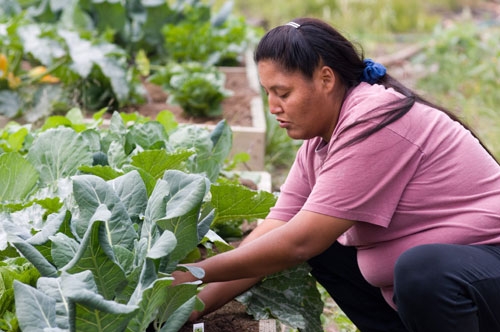
Micro-farms, backyard chickens, bee keeping and raw food markets are popular forms of urban agriculture.


